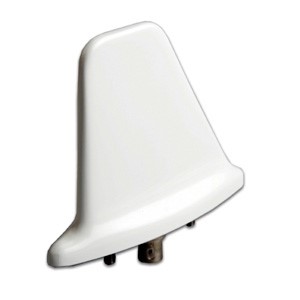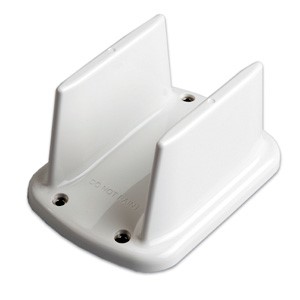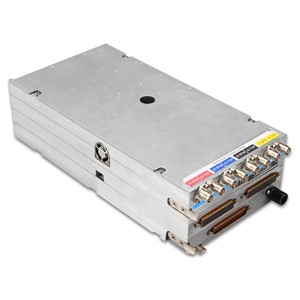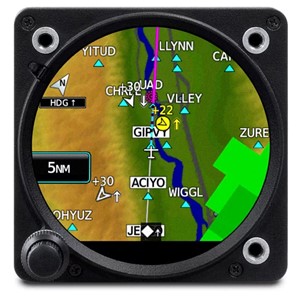Recommended for entry and mid-performance aircraft and helicopters, the GTS 800 TAS features 22nm range, a 10,000 foot vertical separation maximum and a 55,000 foot service ceiling. Stand alone TAS or combine with optional Garmin ADS-B equipment (GDL 88 and GTX- series “ES” transponders) to receive correlated TAS and ADS-B traffic together (on select compatible displays) for the most comprehensive traffic picture available. All backed by Garmin’s 2-year warranty and award-winning product support.
In busy, high-density airspace, pilots are challenged to “see and avoid” other aircraft that may be climbing, descending, or cruising in their vicinity. Alertness and vigilance are critical. But for added protection, nothing beats Garmin’s GTS family of ADS-B enhanced Traffic Advisory (TAS) and Traffic Collision Avoidance (TCAS I) Systems. Featuring exclusive Garmin CLEAR CAS™ technology, these innovative systems provide accurate, dynamic traffic surveillance – with ATC-like spoken audio alerts to help you quickly respond to potential flight path encroachments.
Life-Saving Technology at a Money-Saving Price
Feature-rich yet affordably priced, the Garmin GTS 800 system is designed to bring full TAS traffic surveillance capability well within reach of most GA pilots and their budgets. It offers power, range and performance comparable to systems costing far more. And like all Garmin GTS units, it will operate to 55,000 feet – so it’s not constrained by the much lower altitude limits imposed on some competitive traffic alerting systems.
Better Surveillance Equals Faster Response
Augmenting reports from radar-based air traffic control, the GTS 800 can combine both active and passive surveillance technologies (including 1090 MHz ADS-B “In”) when installed with a compatible “extended squitter” Mode-S transponder such as Garmin’s GTX 330 ES unit (sold separately). Using this hybrid active/passive surveillance, the GTS 800 creates a 360° zone of detection around the aircraft – enabling you to see and identify other nearby transponder-equipped aircraft in time to take prompt corrective action.
As the ADS-B NextGen system becomes available, the GTS 800 will gain enhanced surveillance features, including the ability to display flight identification, position, altitude, velocity and heading information broadcast from other NextGen-enabled transponders. Thus, instead of just seeing random targets on a display, pilots using select displays will be able to identify and track specific intruder movements using familiar TCAS-defined symbology.
It Sees More. So You Worry Less
The GTS 800 can track up to 45 traffic targets simultaneously – and depict up to 30 intruder threats at a time, depending on the display being utilized. Offering 40 watts of transmit power, a +/- 10,000-foot vertical separation maximum, and a typical active interrogation range of 22 nm in the forward direction, the GTS 800 system will interface with a variety of compatible system displays in the cockpit. So it doesn’t require added panel space for a dedicated control/display.
Voice Alerting Helps Keep Heads Up, Eyes Out
Instead of the generic “Traffic, traffic” voice alerts of some earlier-generation systems, the GTS 800’s exclusive CLEAR CAS technology provides for expanded audio messaging in an ATC-like verbal format: “Traffic. One o’clock. High (or Low or Same Altitude). Two miles.” If surveillance bearing information is not available on the intruder, “Traffic, No Bearing” is called out.
By vocalizing more specific traffic-spotting information, pilots know instantly where to look without going “eyes-down” to locate the intruder target on the cockpit display. Obviously, this can save vital split-seconds in a fast-converging traffic situation.
Antenna Options to Optimize Performance
As a value-priced TAS system, the GTS 800 offers performance, utility, and installation flexibility that’s ideally scaled for most single-engine piston aircraft. In addition to the basic TAS remote transmitter/receiver/computer LRU, GTS 800 comes standard with a single top-mounted directional antenna. Bottom-mount directional or omni antennas are also available as an extra-cost option to help optimize coverage and prevent target drop out during turns and maneuvers. See your Garmin dealer for full installation details.
Garmin GTS 800 TAS: It’s the affordable choice for serious traffic surveillance.
- 22 nm of forward-looking coverage
- Generates both aural and visual traffic advisories
- Expanded aural alerts can specify relative target bearing, relative altitude (above/below) and range
- Active and passive (ADS-B) surveillance technologies
- Tracks up to 45 traffic targets simultaneously
- Displays up to 30 intruder threat
- Selectable horizontal display ranges
- ± 10,000 ft. max. relative altitude reference
- Uses TCAS-like symbology
- Interfaces with a variety of compatible MFDs and cockpit displays (not included)
- Selective/directional interrogation reduces frequency congestion
- High-Speed Data Bus (HSDB) or ARINC 429 interface capabilities
- Vertical or horizontal LRU rack mounting
- 14/28 VDC power capability
- Dimensions: 6.25"W x 2.7"H x 12.7"D (15.87 x 7.11 x 32.25 cm) excluding mounting rack
- Weight: 9 lbs (4.08 kg) LRU; excludes connectors
- Vertical rack: 1.05 lbs (0.48 kg)
- Horizontal rack: 1.94 lbs (0.88 kg)
- Operating Altitude: To 55,000 feet
- GTS 800 LRU
- GA 58 Direction Antenna (with either TNC or QMA connector)
- Vertical (fixed-wing) or Horizontal (helicopter) install rack. *Note that the vertical installation rack for helicopters is additional, please call for pricing.
- Traffic System Connector kit
- QMA Termination Connector Kit, if needed (for applications without dual GA58 antennas)
- QMA Right Angle or Straight Connector Kit (2 pieces or 4 pieces, depending on antenna configuration)
- Monopole antenna
- Additional GA 58 Direction Antenna
- Vertical installation rack for helicopter






